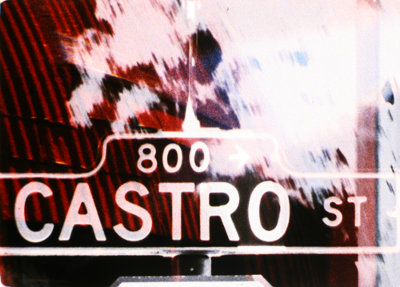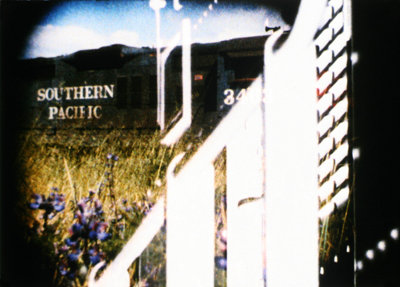

1966, USA, 16mm, colour & b/w, 10 min.
…Technically, when I made Castro Street, I went into the field again with my ‘weapon’, my tools. I collected a couple of prisms and a lot of glasses from my mom’s kitchen, various things, and tried them all in the Berkeley backyard one day. I knew I wouldn’t have access to a laboratory that would allow me to combine black-and-white and color, and I was determined to do it by myself. I went after the soft color on one side of Castro Street where the Standard Oil towers were; the other side was the black and white, the railroad switching yards.
…I shot the railroad material in shorter shots, as ‘masculine’. The ‘feminine’ was the longer, more continuous, simpler, steady color. So one side of the street was feminine for me; the other side masculine. I discovered that I had in my archives some music from Southern India that was based on that idea, and although I didn’t particularly recognize why it was that way, I enjoyed the music, and I needed inspiration so I always played it while I edited. I wanted to visualize that ancient, universal fact of opposites that are one, both in conflict and harmony - opposing each other and abiding together and requiring each other.
Bruce Baillie
A Critical Cinema 2, interviewed by Scott MacDonald (June, 1989)
